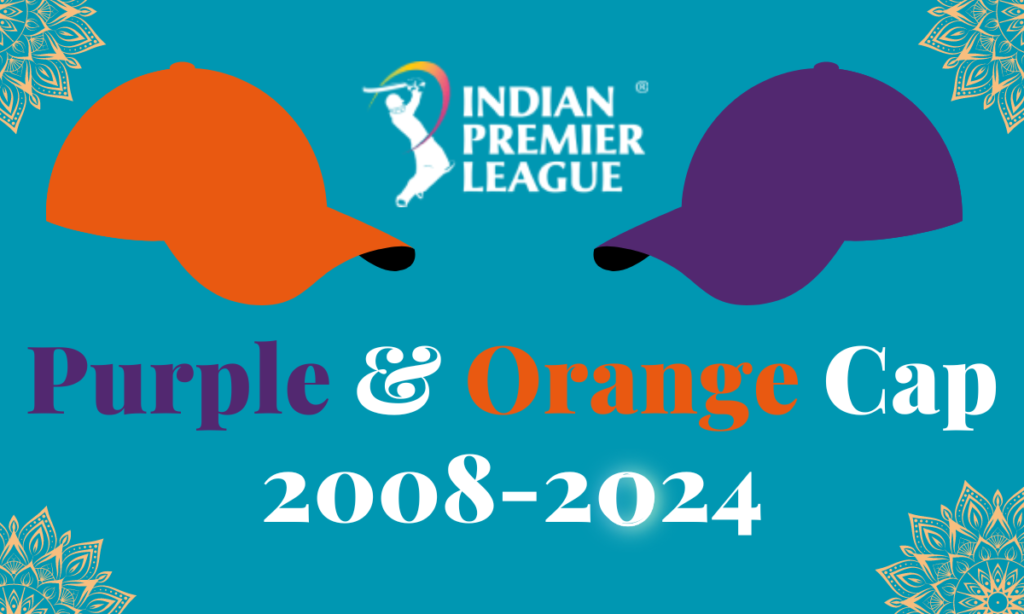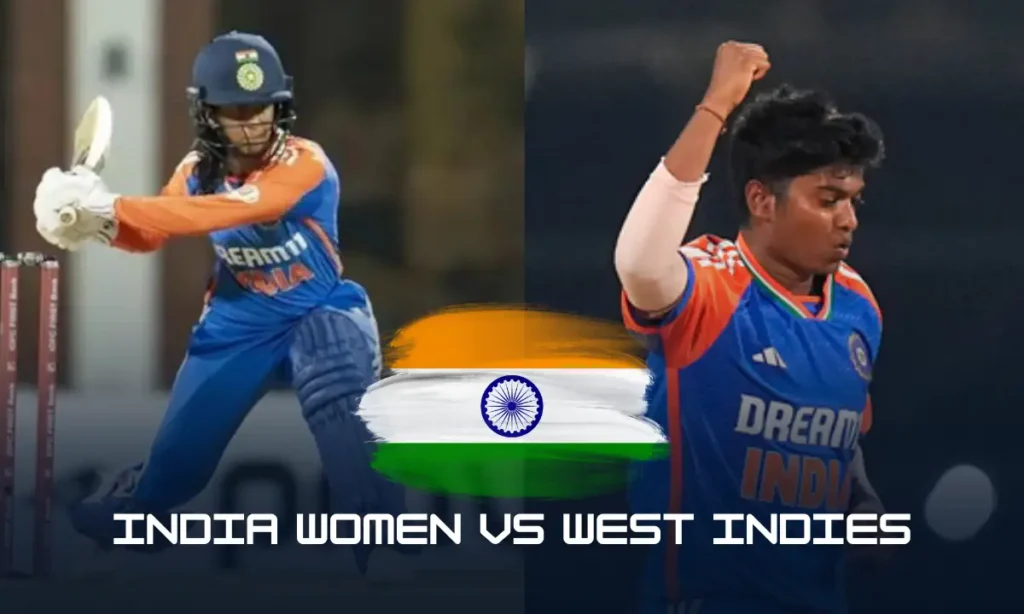As avid sports enthusiasts, we understand the sheer excitement and anticipation that comes with watching a cricket match. But have you ever wondered about the journeys of the players who consistently outshine the rest?
We will take you on a captivating journey through the fascinating stories of cricket’s top performers, represented by the coveted Purple Cap and Orange Cap. Learn about the origins of these prestigious honors, bestowed upon the leading wicket-taker and top run-scorer respectively in cricket tournaments like the Indian Premier League (IPL).
Discover the secrets and strategies behind the consistent success of these phenomenal athletes. We will unravel the tales of their hard work, dedication, and the sacrifices they make to achieve greatness on the field. So, if you’re a cricket fanatic eager to explore the stories behind the numbers! Get ready to be inspired and amazed by the remarkable tales of cricket’s Purple Cap and Orange Cap winners.
The significance of the Purple Cap and Orange Cap in cricket tournaments
The Purple Cap and Orange Cap are awarded in cricket tournaments, most famously in the Indian Premier League (IPL) but also adopted by other leagues. They recognize individual player performance throughout the season.
- Orange Cap: This cap signifies the batsman (batter) with the most runs scored in the entire tournament. It’s a mark of consistent batting excellence. The player wears an orange cap during matches while leading the run-scorers list.
- Purple Cap: This cap is awarded to the bowler who takes the most wickets throughout the season. It acknowledges a bowler’s ability to consistently take down batters. Similar to the Orange Cap, the leading wicket-taker wears a purple cap during matches.
These caps hold significance because:
- Recognition of Individual Brilliance: In a team sport like cricket, these caps highlight individual players who significantly contribute to their team’s success.
- Fan Engagement: The caps create a fun way for fans to follow the tournament and see which players are leading the way in runs and wickets.
- Motivational Factor: The caps act as a motivator for players to push themselves and perform at their best throughout the season.
It’s important to note that winning the Orange Cap or Purple Cap doesn’t guarantee a team victory. While individual brilliance is important, overall team performance is crucial for winning the championship.
History of the Purple Cap and Orange Cap
The Purple Cap and Orange Cap are a relatively new tradition in cricket, both originating in the Indian Premier League (IPL). Here’s a breakdown of their history:
- Birth of the Caps (2008): The IPL launched in 2008, and initially, only the Orange Cap, awarded to the highest run scorer, was announced on April 25th, 2008.
- Purple Cap Follows Suit (2008): Recognizing the importance of bowling performance as well, the IPL introduced the Purple Cap for the leading wicket-taker on May 13th, 2008, later in the inaugural season itself.
- Wearing the Cap: Both caps add a dynamic element to viewership. The player with the most runs or wickets during a tournament wears the respective colored cap while fielding, creating a visual representation of the leader on the field.
- Award Ceremony: While the caps are worn throughout the season to indicate the leader, the official awarding of the Purple and Orange Caps happens at the conclusion of the IPL season, on the day of the final match.
- Tiebreaker System: In case of a tie in either category, the player with a better economy rate (for bowlers) is considered the leader and gets to wear the cap.
Past winners of the Purple Cap and Orange Cap
The Purple Cap and Orange Cap are awards given to the highest wicket-taker and highest run-scorer, respectively, in the Indian Premier League (IPL) cricket tournament each season.
Purple Cap Winners (2008-2024):
| Year | Winner | Team | Runs | Average | SR | 50 | 100 | Highest Score |
|---|---|---|---|---|---|---|---|---|
| 2023 | Shubman Gill | GT | 890 | 59.33 | 157.8 | 4 | 3 | 129 |
| 2022 | Jos Buttler | RR | 863 | 57.53 | 149.05 | 4 | 4 | 116 |
| 2021 | Ruturaj Gaikwad | CSK | 635 | 45.35 | 136.26 | 4 | 1 | 101* |
| 2020 | KL Rahul | KXIP | 670 | 55.83 | 129.34 | 5 | 1 | 132* |
| 2019 | David Warner | SRH | 692 | 69.2 | 143.87 | 8 | 1 | 100 |
| 2018 | Kane Williamson | SRH | 735 | 52.5 | 142.44 | 8 | 0 | 84 |
| 2017 | David Warner | SRH | 641 | 58.27 | 141.81 | 4 | 1 | 126 |
| 2016 | Virat Kohli | RCB | 973 | 81.08 | 152.03 | 7 | 4 | 113 |
| 2015 | David Warner | SRH | 562 | 43.23 | 156.54 | 7 | 0 | 91 |
| 2014 | Robin Uthappa | KKR | 660 | 44 | 137.78 | 5 | 0 | 83 |
| 2013 | Michael Hussey | CSK | 733 | 52.35 | 129.5 | 6 | 0 | 95 |
| 2012 | Chris Gayle | RCB | 733 | 61.08 | 160.74 | 7 | 1 | 128 |
| 2011 | Chris Gayle | RCB | 608 | 67.55 | 183.13 | 3 | 2 | 107 |
| 2010 | Sachin Tendulkar | MI | 618 | 47.53 | 132.61 | 5 | 0 | 89 |
| 2009 | Matthew Hayden | CSK | 572 | 52 | 144.81 | 5 | 0 | 89 |
| 2008 | Shaun Marsh | KXIP | 616 | 68.44 | 139.68 | 5 | 1 | 115 |
Purple Cap Winners (2008-2024):
| Year | Player | Team | Matches | Wickets | Average | Economy | Strike Rate | 4W | 5W |
|---|---|---|---|---|---|---|---|---|---|
| 2023 | Mohammed Shami | GT | 17 | 28 | 18.64 | 8.03 | 13.92 | 0 | 1 |
| 2022 | Yuzvendra Chahal | RR | 17 | 27 | 19.51 | 7.75 | 15.11 | 1 | 1 |
| 2021 | Harshal Patel | RCB | 15 | 32 | 14.34 | 8.14 | 10.56 | 1 | 1 |
| 2020 | Kagiso Rabada | DC | 17 | 30 | 18.26 | 8.34 | 13.3 | 2 | 0 |
| 2019 | Imran Tahir | CSK | 17 | 26 | 16.57 | 6.69 | 14.84 | 2 | 0 |
| 2018 | Andrew Tye | PBKS | 14 | 24 | 18.66 | 8 | 14 | 3 | 0 |
| 2017 | Bhuvneshwar Kumar | SRH | 14 | 26 | 14.19 | 7.05 | 12 | 0 | 1 |
| 2016 | Bhuvneshwar Kumar | SRH | 17 | 23 | 21.3 | 7.42 | 17.2 | 1 | 0 |
| 2015 | Dwayne Bravo | CSK | 17 | 26 | 16.38 | 8.14 | 12 | 0 | 0 |
| 2014 | Mohit Sharma | CSK | 16 | 23 | 19.65 | 8.39 | 14 | 1 | 0 |
| 2013 | Dwayne Bravo | CSK | 18 | 32 | 15.53 | 7.95 | 11.7 | 1 | 0 |
| 2012 | Morne Morkel | DD | 16 | 25 | 18.12 | 7.19 | 15.1 | 1 | 0 |
| 2011 | Lasith Malinga | MI | 16 | 28 | 13.39 | 5.95 | 13.5 | 0 | 1 |
| 2010 | Pragyan Ojha | DC | 16 | 21 | 20.42 | 7.29 | 16.8 | 0 | 0 |
| 2009 | RP Singh | DC | 16 | 23 | 18.13 | 6.98 | 15.5 | 1 | 0 |
| 2008 | Sohail Tanvir | RR | 11 | 22 | 12.09 | 6.46 | 11.22 | 1 |
How the Purple Cap and Orange Cap are awarded
The awarding of the Purple Cap and Orange Cap in cricket tournaments follows a two-part process:
Throughout the Tournament (Wearing the Cap):
- Top Performers Wear the Cap: The player with the most runs scored (Orange Cap) and the bowler with the most wickets taken (Purple Cap) during the ongoing tournament gets to wear the respective colored cap while fielding.
- Dynamic Representation: This system creates a dynamic way for viewers to see the leaders in runs and wickets on the field itself. It adds a visual element to the competition.
- Updating the Leader: After each match, the list of top run scorers and wicket-takers is updated. If a new player takes the lead in runs or wickets, they get to wear the respective cap in the next match.
Official Award Ceremony (End of Tournament):
- Final Recognition: While the caps are worn throughout the season, the official awarding of the Purple Cap and Orange Cap happens at the conclusion of the tournament. This typically takes place on the day of the final match.
- Winner’s Trophy: The leading run-scorer (Orange Cap) and leading wicket-taker (Purple Cap) receive a special trophy or award during a ceremony.
- Tiebreaker System: In case there’s a tie for either the most runs or wickets at the end of the season, a tiebreaker system is used. For bowlers, the player with the better economy rate is considered the winner. Economy rate is a statistic that measures how many runs a bowler concedes per over.
Famous players who have won the Purple Cap and Orange Cap multiple times
While winning both the Purple Cap (most wickets) and Orange Cap (most runs) in a career is a rare feat requiring exceptional all-round ability, there haven’t been any players who achieved this within the IPL so far.
However, there are some famous players who have dominated one category and won the respective cap multiple times:
- Orange Cap (Most Runs):
- David Warner (Australia): Holds the record for most Orange Caps with three wins (2015, 2017, 2019) while playing for Sunrisers Hyderabad.
- Chris Gayle (West Indies): Won the Orange Cap twice (2010, 2011) while playing for Royal Challengers Bangalore.
- Purple Cap (Most Wickets):
- Lasith Malinga (Sri Lanka): The legendary fast bowler has won the Purple Cap a record four times (2011, 2012, 2013, 2015) while playing for Mumbai Indians.
- Kagiso Rabada (South Africa): The young pace sensation has clinched the Purple Cap twice (2020, 2023) while playing for Delhi Capitals and Punjab Kings respectively.
Impact of winning the Purple Cap and Orange Cap on a player’s career
Winning the Purple Cap or Orange Cap in a cricket tournament, particularly the IPL, can significantly impact a player’s career in several ways:
Enhanced Recognition:
- Individual Spotlight: In a team sport like cricket, these awards put a spotlight on individual brilliance. Winning the Cap signifies a player’s exceptional performance throughout the season, making them stand out amongst teammates and competitors.
- Media Attention: Cap winners gain increased media coverage and attention, which can elevate their profile in the cricketing world and attract potential sponsorships or endorsements.
Boosted Market Value:
- Increased Demand: A Cap win showcases a player’s peak form and consistency, making them more desirable for other teams in upcoming auctions or drafts. This can lead to them fetching higher salaries or attracting interest from prestigious franchises.
- Bargaining Power: For established players, a Cap win strengthens their negotiating position when it comes to contracts or brand associations.
Career Trajectory:
- Improved Opportunities: Winning a Cap can open doors for participation in other leagues or international tournaments. Teams and selectors take notice of exceptional performers, potentially leading to a national call-up or a chance to play in other high-profile leagues.
- Confidence Boost: The recognition and appreciation associated with winning a Cap significantly bolsters a player’s confidence. This mental edge can translate into even better performances in future matches and series.
However, it’s important to consider these nuances:
- Not a Guarantee of Team Success: While individual brilliance is important, the Cap doesn’t guarantee a team’s victory. A team with a balanced performance throughout the season has a higher chance of winning the championship.
- Focus and Motivation: The pursuit of winning the Cap can put pressure on a player to perform consistently, potentially leading to a shift in focus away from team strategy.
Overall, winning the Purple or Orange Cap is a prestigious achievement that acknowledges a player’s exceptional talent and hard work. It can significantly propel their career forward by boosting their reputation, marketability, and opening doors to new opportunities.
Controversies and memorable moments surrounding the Purple Cap and Orange Cap
While the Purple and Orange Cap awards generally celebrate impressive individual performances, there have been a few instances of controversy and some truly memorable moments surrounding them.
Controversies:
- Focus on Individual Stats Over Team Strategy: Some argue that the emphasis on these awards can lead players to prioritize personal statistics over team tactics. For example, a batsman might prioritize scoring boundaries for runs instead of taking calculated risks to rotate the strike and keep the scoreboard ticking for the team.
- Impact on Bowling Economy: For bowlers, the focus on wickets can sometimes come at the expense of economy rate. A bowler might go all-out for wickets even if it leads to conceding more runs, which isn’t ideal for the team.
- Devaluing Other Contributions: The awards solely focus on runs and wickets, potentially overshadowing the crucial contributions of other players like fielders, all-rounders, or even bowlers who might not be the highest wicket-taker but still play a vital role in restricting runs.
Memorable Moments:
- Close Races and Last-Match Battles: There have been instances where the race for the Cap has gone down to the wire, with players neck-and-neck in terms of runs or wickets. This creates exciting moments for fans who get to witness a thrilling battle for individual glory until the very last match.
- Young Player Breakthroughs: When young, up-and-coming players win the Cap, it becomes a truly memorable moment. It signifies the emergence of new talent and creates a sense of excitement for the future of the sport.
- Double Cap Wins in a Season: While rare, a player dominating both batting and bowling and winning both the Orange Cap and Purple Cap in the same season is a truly special achievement. It marks a season of exceptional all-round brilliance.
- Records Being Broken: When a player breaks a record for most Orange or Purple Caps won in their career, it’s a significant milestone. It highlights their consistent dominance and exceptional talent over multiple seasons.
These controversies and memorable moments showcase the multifaceted nature of the Purple and Orange Cap awards. While they celebrate individual brilliance, they also spark discussions about team strategy and the importance of well-rounded contributions to success.
Conclusion: The legacy of the Purple Cap and Orange Cap in cricket
Despite some controversies, the Purple Cap and Orange Cap have become a well-established tradition in cricket tournaments. They celebrate individual excellence while generating excitement among fans. However, it’s important to remember that these awards are just one piece of the puzzle. True success in cricket comes from a balanced team effort where individual brilliance complements a well-defined team strategy.







